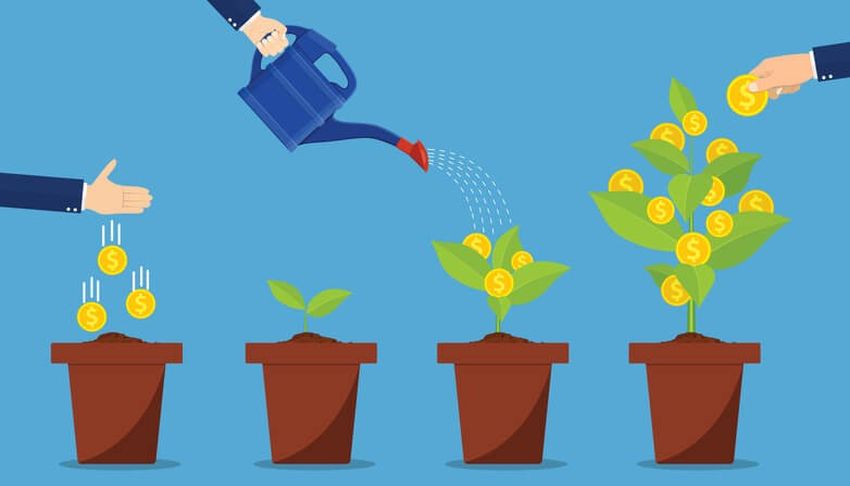There are very few people who are well aware of the term venture capital and wouldn’t probably know what it exactly it. No worries because today we will help you out in this matter and explain it to you. Just read this article till the end to have some know-how regarding the concept and its various stages.
This term Venture capital has been commonly used around when the people talk about getting startups off the ground. Although most know that it’s a foundation of capital, fewer people are acquainted with exactly how venture capital financing works.

source:medium.com
In layman words, we can say that it is a type of subsidy that pools together cash from stockholders and loans it to developing corporations and startups that the funds believe have the possibility for long-term growth. Its investments usually based on high risk in terms of possibly high reward.
In case you just look at the home screen on your iPhone or Android device, what would you probably see? There are chances that you’ll see at least one application that was made and promoted with venture capital. Free ones such as Instagram, Snapchat and Dropbox all raised multiple rounds of funding en route to masses of downloads. Likewise, pay-per-use services such as Uber and Lyft have utilized VC funding to take on deep-rooted trades such as taxi and limousine transportation.
The expanse of money that goes into startups has been on the growth in the last few years. In the year 2013, VCs capitalized closely $11 billion in seed and early-stage corporations, up more than 17% from the previous year. Although less than 1% of all startups molded each year strike a VC deal, funding is both an influential resource for the industries that receive it and a pointer of significant tendencies in technology.

source:growthx.com
In the year 2014, for instance, there was so much VC attention on Bitcoin than ever before, emphasizing how the protocol was being sustained by more merchants and applications.
As every company is different from the other, the different stages can vary slightly from financing to financing. We can get help from James Cook University to take online admission in different business related courses.
Commonly speaking, however, there are five distinct stages of any venture capital financing.
-
Page Contents
The Seed Stage
The process of venture capital financing begins with the seed-stage when the corporation is usually little more than an impression for a merchandise or service that has the possibility to grow into a prosperous business down the road. There are many entrepreneurs who spend most of this phase convincing stockholders that their thoughts signify a feasible chance for an amazing investment opportunity.

source:startupbhopal.com
Backing amounts in the seed stage are usually small and are mainly utilized for things such as marketing research, product development, and business development, with the goal of making a model to appeal additional investors in later funding rounds.
-
The Startup Stage
In this phase, corporations have normally finalized research and development and planned a business plan, and are now ready to start publicizing and marketing their merchandise or service to prospective consumers. Usually, the company has a sample to show depositors but has not yet traded any products. At this point, businesses need a larger breakthrough by having enough cash to fine tune their merchandises and services, enlarge their workers, and directing any remaining research essential to help an official business launch.
-
The First Stage
At times this phase is also termed as the “emerging stage,” first stage funding usually agrees with the corporation’s market launch, when the corporation is about to begin seeing a profit. Capitals from this phase of a venture capital funding normally go to actual product manufacturing and sales, as well as improved marketing. For the sake of achieving an official launch, businesses normally require a much bigger capital investment, so the backing amounts in this stage incline to be much higher than in earlier phases.
-
The Expansion Stage
This one is commonly denoted to as the second or third stages; the expansion stage is the time when the corporation is seeing exponential evolution and requires extra funding to fulfill the demands and requirements. Because the business might probably be expected to be already has a commercially feasible product and is beginning to see some productivity, venture capital funding in the developing stage is mostly utilized to grow the business even further through market growth and product expansion.
-
The Bridge Stage
The last stage of venture capital financing, the bridge stage is also known as the pre-public stage and mezzanine stage is when corporations have been developed. Funding acquired here is usually utilized to aid activities like mergers, acquisitions, or IPOs.
If these are new terms for you do some research to be ready for this critical stage. This Wall Street Prep guide on mergers and acquisitions is a perfect place to start.
The phase is basically a transition to the corporation being a full-fledged, practicable business. At this time, there are many depositors who would like to choose and sell their shares so they could be able to end their connection with the corporation, often receiving a noteworthy return on their investments.
A qualified business advocate can lead you through the various stages of venture capital financing and direct you on the best ways to secure funding for your business in its existing stage.

source:medium.com
Conclusion
Hence proved that venture capital has a lot of perks for entrepreneurs and for companies that have the potential to do something out of the ordinary and have some prospect of growth and development in the long-run.





